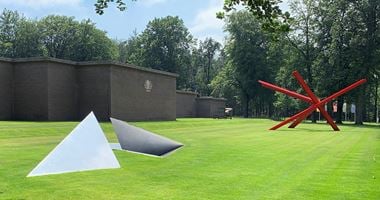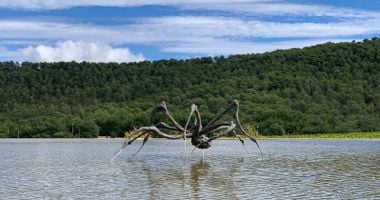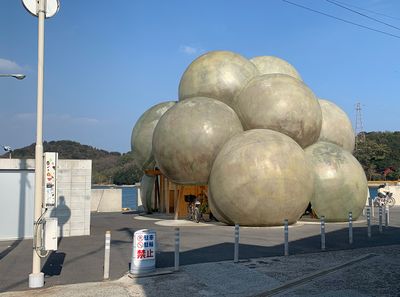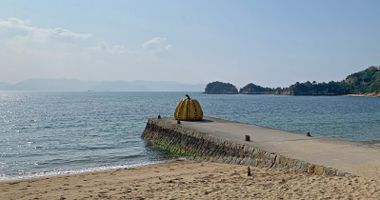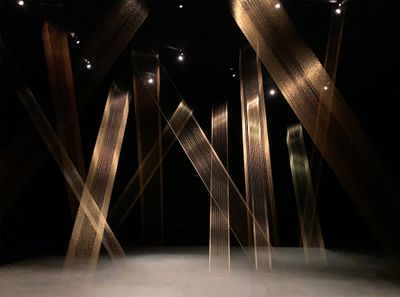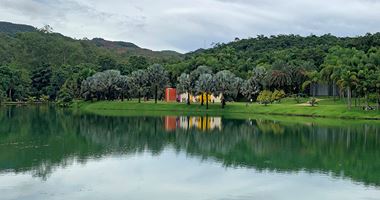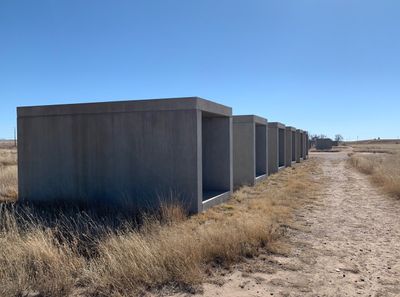How to Make a Sculpture Park that Doesn’t Suck
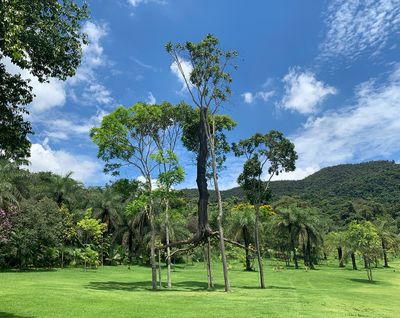
Giuseppe Penone, Elevazione (2000–2001) at Inhotim. Bronze. Photo: Georges Armaos.
After researching 75 top sculpture parks and highlighting a 'magnificent seven' parks around the world, Gagosian's Georges Armaos has a formula for creating art sites that succeed publicly, critically, and financially. It's not easy.
Sculpture parks are extremely difficult to get right. More often than not, putting art in nature looks terrible, and for most people it's irrelevant. That hasn't stopped people trying. Birkbeck, University of London, lists hundreds of sculpture parks around the world, most of them, I would argue, failures.
After years of research and a lot of help from friends and colleagues, I arrived at a 75-strong list that would meet criteria similar to the ones used to evaluate museums, such as quality and depth of collection, architecture, exhibitions, education, and visitor numbers. Seven of the 75 are truly world class, regularly featuring in the press and on people's bucket lists. They're the ones that make art professionals ashamed to admit they haven't been.
The magnificent seven are: Kröller-Müller Museum in Otterlo, the Netherlands; Yorkshire Sculpture Park in Yorkshire, UK; Château La Coste in Aix en Provence, France; Marfa's Chinati and Judd Foundations in Texas, USA; Inhotim in Brumadinho, Brazil; the Museum of Old and New Art (MONA) in Hobart, Australia, and the Benesse Art Site in Naoshima, Japan.
Each site is different, of course. Kröller-Müller and Yorkshire Sculpture Park focus narrowly on art, nature, and education. Marfa is in the desert, while Benesse is spread over a few islands in the south of Japan. Inhotim is a vast botanical garden as well as an art and architecture collection, while MONA and Château La Coste began as vineyards then blossomed as collections of food, drink, art, and more.
Successful art sites are also serious business. In a single year, Benesse Art Site counted 653,536 visitors, Kröller-Muller 405,000, Château La Coste over 250,000, and Chinati almost 50,000, dwarfing Marfa's population of just 1,714. Despite the Brumadinho dam disaster, Inhotim received 262,432 visitors in 2019. Usually they get 350,000.
The benefits of all these visitors extend beyond ticket sales to the wider community. In 2011, the Yorkshire Sculpture Park, which received 488,750 visitors in 2019, estimated that for each pound spent on the park, five pounds were generated for the local economy. Today, according to director Clare Lilley, the payoff has risen to ten pounds per pound of expenditure. An independent study by Deloitte found that MONA, which received over 400,000 visitors last year, contributed $135 million to the Tasmanian economy, and $165 million to Australia's GDP in the 2017–2018 financial year.
Great art sites provide immersive experiences, the 21st century's gesamtkunstwerk (total artwork) that people are really after. If the visitor numbers don't convince you that people really want these experiences, then consider the 2.3 million visitors to teamLab's Borderless exhibition in its first year operating in Tokyo. For something similar yet so different, take a look at the visitor numbers Disneyland or Legoland achieve.
The best art sites typically begin as ingenious, crazy, or stubborn private initiatives. They are infinitely more complicated than museums to put together correctly and harder to make last. You need big ideas, great art, space, stamina, longevity, and very, very deep pockets.
It doesn't matter how many images you see or articles you read. Unless you have physically experienced these places, you can't imagine the sensation of, for example, emerging from the jungle at Inhotim into a brutalist concrete building by Rizoma Arquitetura and discovering Ttéia 1C (2002), Lygia Pape's magnificent sculpture of golden threads and light.
Having experienced 23 of these sites in my research, I can now say with absolute certainty that Inhotim is the best art site on earth, followed by MONA and Château La Coste. A condensed summary of what makes it successful includes a grand, personal vision, in this case that of founder Bernardo Paz, a former mining magnate, along with the finances, exceptional local art professionals, and international advisors to back it up.
You also need an amazing site. Here, it's a garden designed by Roberto Burle Marx, whose talent for landscaping is as towering as Oscar Niemeyer's for architecture—the gardens are cared for by 60 gardeners or more. Sufficient space is also key: each artist and each work needs its own individual stage to succeed. You can't listen to two operas simultaneously.
Inhotim also has a serious collection—top-notch Brazilian and international art created over the last 40 years—and impressive architecture, housing indoor art in 23 buildings, some of which have become landmarks in their own right. Are there any elements where Inhotim is not stellar? The food and accommodation are not as excellent as at Château La Coste and MONA, but these can be improved in due time.
Balancing the needs of local and international audiences is another challenge. You don't go to Brazil to look at Asian artists or to the Netherlands to look at African artists, the same way you don't seek Nordic cuisine when you travel to Italy. You go to a place to experience what's unique to them. But for the locals, who usually constitute 75 to 80 percent of visitors, including a selection of international offerings allows them to see something new. Inhotim, Château La Coste, MONA, and the Yorkshire Sculpture Park are constantly adding new works and temporary exhibitions to keep communities engaged—and every good art site needs a local community that embraces the complex as its own.
Creating a world-class art site is no easy feat but keeping it world class is even more difficult. If they're not constantly updated, art sites can quickly look old and tired. Staying relevant hinges on the consistent execution of the vision, which in turn relies on the continuous orchestrated commitment of countless artists, curators, installers, architects, gardeners, cleaners, and docents.
Worldwide, there's increasing competition to build and maintain cultural excellence through art sites. In addition to numerous failures, we can look forward to a few exceptional new destinations for art to be created, presented, and experienced. Many more art sites and destinations are planned or will become publicly accessible in the future, among them Michael Heizer's City, James Turrell's Roden Crater, Anselm Kiefer's La Ribaute, Bangladesh's Srihatta, and some significant projects in Saudi Arabia that aren't yet public. —[O]

